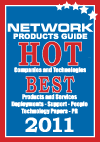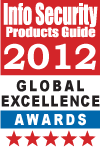Computerworld…
NAC: What Went Wrong
IDG reporter Joel Snyder and his colleagues spent four months in the lab testing the 12 leading network access control (NAC) products, and identified six barriers that have impeded the deployment of NAC within enterprise networks. They also came to conclusion that “There’s no such thing as ‘best of breed’ in NAC, because for the 12 vendors evaluated, there are nearly 12 different ‘breeds’ of NAC product”.
The AShimmy Blog…
How Cisco’s Infighting Put Customers Last and Almost Killed the NAC Market
Blogger Alan Shimmy offers his perspective on how Cisco was the worst / best thing that ever happened to NAC, and shares his opinions of Joel Snyder’s article, “Cisco’s NAC Goes Off Track, Customers Taken Aback”. Continuing on Cisco’s NAC customer beat and the fact that the company tried to kill off NAC, Alan believes the customers are the ‘biggest losers’ because they are sitting on tens of thousands of dollars of NAC equipment.
Forward Thinking with Michael Miller…
Using the iPad As a Work Machine
Michael Miller of PCMag.com tests out the iPad for business applications, and shares both his likes and the limitations he found. One point that particularly stuck out to us is the need for a VPN client—as he points out, Michael would rather use a notebook and be secure.






Rescue NAC from the garbage pile? Part 1
Posted: May 27, 2010 in Industry CommentaryTags: NAC, NetworkWorld, TNC, VPN
This one isn’t marketing’s fault, although they didn’t do much to help. We’re talking about NAC and it’s dismal market performance. So what happened and should it be rescued? We’ll tackle this – piece by piece – over the next few weeks. Let’s start with the lack of standards.
The Trusted Computing Group’s Trusted Network Connect (TNC), an industry organization that crafts NAC architecture documents and standards, recently launched a certification program which allows participating vendors to get a hallmark guaranteeing that their products implement the TNC protocols correctly, and that their architecture is compatible with other certified products.
But of course, the certification program stirred some dissent among vendors, as often has in the group’s five year history. TNC’s standards have rarely debuted without — often provocative and rancorous — debate. Joel Snyder, of NetworkWorld, this week chronicled TNC’s controversies, as well as the stubborn issues that continue to plague NAC. NetworkWorld recently conducted head-to-head tests of 12 NAC products to boil down what’s ultimately gone wrong with NAC, which was once so hyped and is now often feared.
Despite the disputes surrounding the certification, Snyder rightly points out the necessity for having standards in place.
First, it represents the main path forward for interoperable NAC products. With enterprise networks hosting more non-Windows devices than ever before, the need to have a multi-vendor approach to NAC continues to gain in importance.
The second reason is that these architectures are designed by security and network experts who are more interested in solving problems than getting a product to market quickly. While there are always commercial interests in any modern standards development, network managers can look to TNC and IETF-based products with some confidence that the primary design goal was security.
Without standards in place, NAC will continue to be a complicated headache for customers, many of whom will ultimately reject the technology and convince themselves that naked WLAN – maybe a firewall or two thrown in for good measure – is sufficient. That is, until they’re faced with a security breach.
Is the TNC certification a path out of the garbage pile? Chime in and join the discussion.
Share this: